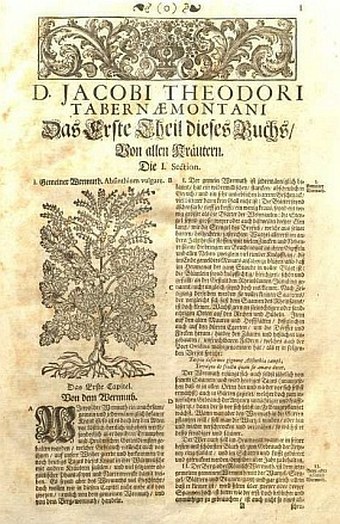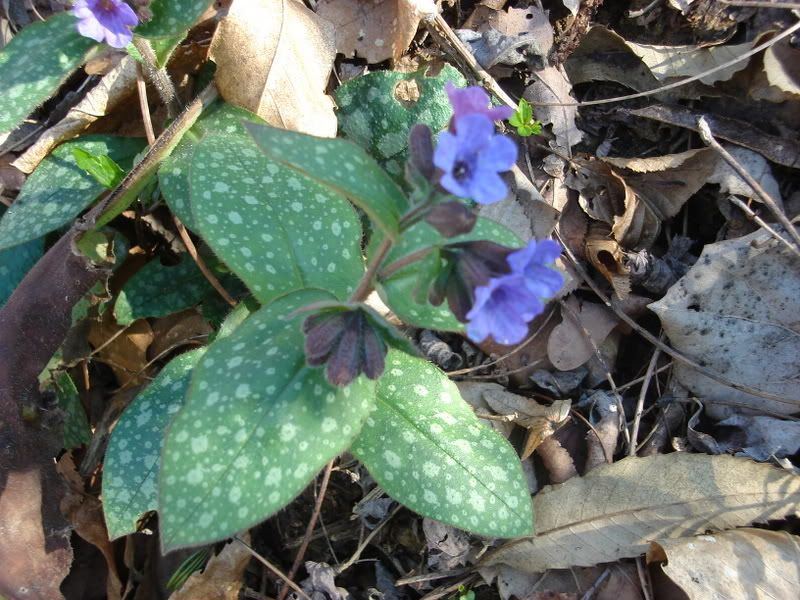Originally, I didn't even plan to write about this topic for this week of the Pagan Blog Project, but I was overwhelmed today by the beautiful weather and my gardening plans for tomorrow!
I went to a local plant nursery today with my mom who is also a big plant lover. We actually don't have a garden - we have a balcony with lots of flower pots, but we're more than happy with this. :) We had the intention of "adopting" a few nice plants to bring a bit more life to our home for the spring. Unfortunately, I live in the city where there aren't many plants I can get without breaking laws or trespassing (especially not medicinal and aromatic plants; the kind I love the most) so we had to buy them. I prefer to borrow plants from the wild, or plant them as seeds and watch them grow day by day, but some things you just can't get so easily...so buying was the only option. In any case, my mom wanted to get some decorative plants since she loves those (she kind of sees them as her other children, which I find adorable) and I wanted to find some medicinal plants which I can use for making ointments, creams and such. Long story short, we drove off with a car full of plants which we could barely wait to get home. I ended up sharing the passenger seat with a huge Banksias Rose.
So tomorrow is replanting day! And I am really excited. We got so many beautiful plants that will go along wonderfully with all the other ones that are just in bloom. This reminds me of how much I love springtime!
The reason why I decided to write about gardening, other than this ecstatic feeling I have at the moment, is the fact that I see this activity as a great way to bond with nature. As a Pagan, I love bonding with nature as do most Pagans; after all, nature is an integral, if not central part of Paganism (what with it being an earth-based path and all).
Basically anything to do with nature fills me with positive energy, enriches my soul and regenerates me both physically, mentally and spiritually. Just the feeling of the moist soil under my fingertips and the warm sun against my back bring a smile to my face. As if this isn't enough, I love the fact that planting is ecological. I see this as a way of protecting the Earth and also bringing forth new life. These plants won't stay small forever; their seeds will spread and in turn grow and repeat this whole cyclical process. This is nature's heartbeat.
There are many wonderful ways for a Pagan to commune with nature. Sometimes simply touching the earth, letting the soil pass through your fingers, or just walking barefoot on the earth can be a sensational feeling. The planting process itself can be fulfilling and very meditative if it is done in peace. You can visualize each plant growing as you plant it, or you can see your positive energy "watering" the earth as you dig the hole for the plant and cover the roots. Many witches out there are aware of the magical properties of plants and probably all of them are familiar with the idea that each plant is supposed to be planted at a certain time (which astrologically corresponds to the plant at hand) if it is to reach its full biological and magical potential. Harvesting plants is another great way to connect with them and also perform magic. Many witches also take into consideration the date and time of the harvesting as this may also effect the energy of the plant and consequently the outcomes of magical works (if they are to be performed).
Personally, I plant and harvest when I get the chance and when I feel like enjoying the presence of Mother Nature's children.
Of course, gardening has practical benefits in addition to these spiritual ones. You can pick and choose which plants you have in your garden; from vegetables and culinary herbs which you can use in the kitchen (*wink* to all you kitchen witches out there), aromatic plants which you can use to make your own aromatic oils, and basically any herb which you feel you can use in your rituals (sage for cleansing the circle, mint for making anointing oil and so on). The more energy and love you put into your plants, the better they will grow and the more quality they will prove to be when it's time to actually use them for a certain purpose. At least this is how it has been for me so far. :)
 I find it very rewarding when I see a plant grow (be it from a seed or not) knowing that I helped it get to that stage. Still, what's even more rewarding is being able to actually use these plants. This is why I love medicinal and aromatic plants so much. In the past, I made chamomile tea, marigold ointment and a number of other herbal remedies from my own plants. I can't even begin to explain the pride I felt from this. And even if you prefer nice flowers over herbs, you can still use the flowers for you table centerpieces, give them as gifts or use them in DIY projects.
I find it very rewarding when I see a plant grow (be it from a seed or not) knowing that I helped it get to that stage. Still, what's even more rewarding is being able to actually use these plants. This is why I love medicinal and aromatic plants so much. In the past, I made chamomile tea, marigold ointment and a number of other herbal remedies from my own plants. I can't even begin to explain the pride I felt from this. And even if you prefer nice flowers over herbs, you can still use the flowers for you table centerpieces, give them as gifts or use them in DIY projects.
But no matter what plant you choose to grow, it's sure to bring you joy and pride if you take care of it.
Since this post wasn't so typical of me (it's more personal and less "practical" and objective), I have to recommend a few nice books and web-sites to stay true to my industrious nature. :) So here are a few reads which I find very useful for any Pagan that has a love for their garden. :D Enjoy!
Cunningham, Scott - The Complete Book of Incense Oils and Brews
Cunningham, Scott - Cunningham’s Encyclopedia of Magical Herbs
Hoffmann, David - Medical Herbalism Complete
Marcin, Marietta Marshall - The Complete Book of Herbal Teas
Martin, Deborah J. - Herbs: Medicinal, Magical, Marvelous!
Miller, Richard Alan - Magical and Ritual Uses of Common Herbs
Moore, Michael - Herb Formulas
Mrs Grieve - A Modern Herbal
Ward, Harold - Herbal Manual
Weil, Andrew - Guide to Herbal Medicines
Unknown - Herbs and Their Magical Properties
Pagan Path - "Witchcraft Gardening Basics"
Rain-tree - "Methods of Preparing Herbal Remedies"
And finally, here are the results of my mom's and my gardening work :)
Of course, gardening has practical benefits in addition to these spiritual ones. You can pick and choose which plants you have in your garden; from vegetables and culinary herbs which you can use in the kitchen (*wink* to all you kitchen witches out there), aromatic plants which you can use to make your own aromatic oils, and basically any herb which you feel you can use in your rituals (sage for cleansing the circle, mint for making anointing oil and so on). The more energy and love you put into your plants, the better they will grow and the more quality they will prove to be when it's time to actually use them for a certain purpose. At least this is how it has been for me so far. :)
 I find it very rewarding when I see a plant grow (be it from a seed or not) knowing that I helped it get to that stage. Still, what's even more rewarding is being able to actually use these plants. This is why I love medicinal and aromatic plants so much. In the past, I made chamomile tea, marigold ointment and a number of other herbal remedies from my own plants. I can't even begin to explain the pride I felt from this. And even if you prefer nice flowers over herbs, you can still use the flowers for you table centerpieces, give them as gifts or use them in DIY projects.
I find it very rewarding when I see a plant grow (be it from a seed or not) knowing that I helped it get to that stage. Still, what's even more rewarding is being able to actually use these plants. This is why I love medicinal and aromatic plants so much. In the past, I made chamomile tea, marigold ointment and a number of other herbal remedies from my own plants. I can't even begin to explain the pride I felt from this. And even if you prefer nice flowers over herbs, you can still use the flowers for you table centerpieces, give them as gifts or use them in DIY projects.But no matter what plant you choose to grow, it's sure to bring you joy and pride if you take care of it.
Since this post wasn't so typical of me (it's more personal and less "practical" and objective), I have to recommend a few nice books and web-sites to stay true to my industrious nature. :) So here are a few reads which I find very useful for any Pagan that has a love for their garden. :D Enjoy!
Cunningham, Scott - The Complete Book of Incense Oils and Brews
Cunningham, Scott - Cunningham’s Encyclopedia of Magical Herbs
Hoffmann, David - Medical Herbalism Complete
Marcin, Marietta Marshall - The Complete Book of Herbal Teas
Martin, Deborah J. - Herbs: Medicinal, Magical, Marvelous!
Miller, Richard Alan - Magical and Ritual Uses of Common Herbs
Moore, Michael - Herb Formulas
Mrs Grieve - A Modern Herbal
Ward, Harold - Herbal Manual
Weil, Andrew - Guide to Herbal Medicines
Unknown - Herbs and Their Magical Properties
Pagan Path - "Witchcraft Gardening Basics"
Rain-tree - "Methods of Preparing Herbal Remedies"
And finally, here are the results of my mom's and my gardening work :)
































